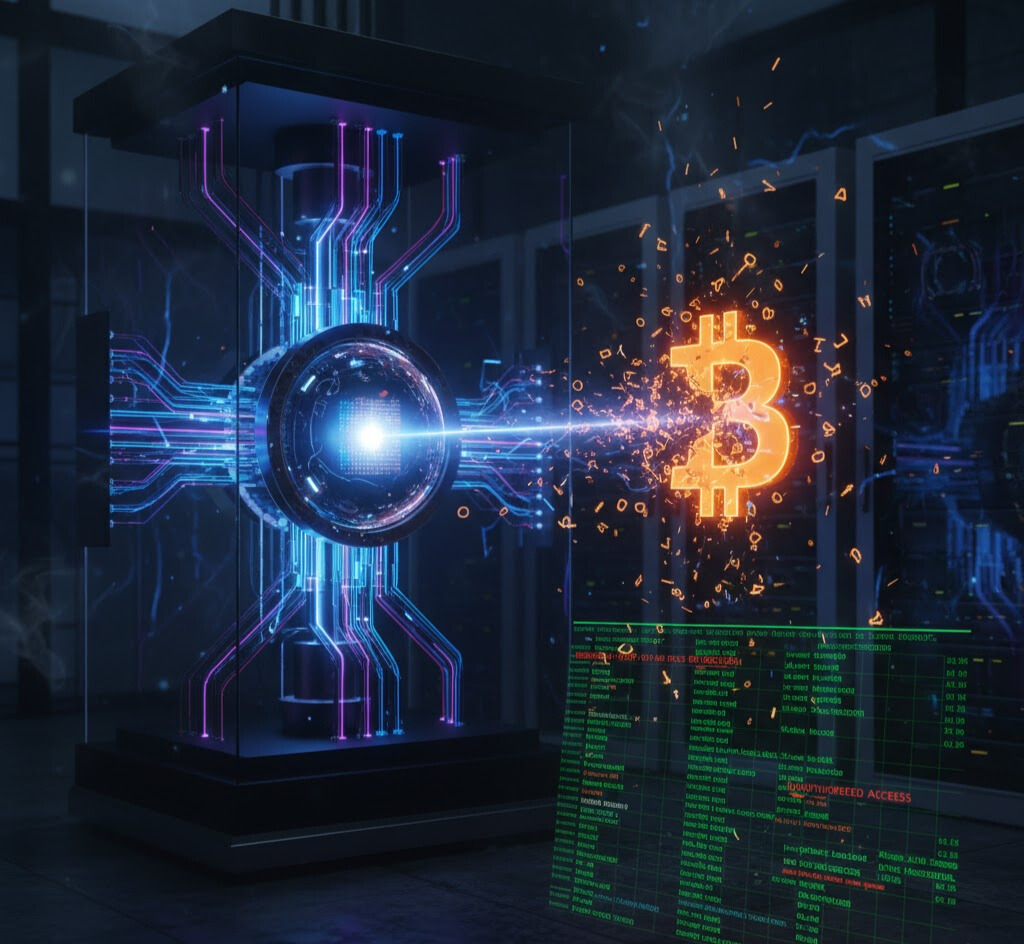If a quantum computer capable of cracking modern encryption came online today, the Bitcoin network could be compromised in a way that would be almost impossible to detect, according to industry experts.
The threat is not one of visible network disruption, but of silent theft. “Everything would look like legitimate access,” explained David Carvalho, CEO of post-quantum infrastructure company Naoris Protocol.
He warns that by the time an attack is recognized, the quantum computer “is already been in control for months.” This potential vulnerability stems from the fact that most public blockchains still rely on cryptographic standards designed decades ago, while researchers at institutions like IBM and Google are racing toward quantum-safe solutions.
The Mechanism of a Quantum Attack
Bitcoin’s security is fundamentally dependent on the Elliptic Curve Digital Signature Algorithm (ECDSA), a cryptographic standard first proposed in 1985. This system enables users to prove ownership of their funds using a private key that corresponds to a publicly visible public key.
The danger lies in the theoretical application of Shor’s algorithm by a sufficiently powerful quantum computer. Such a machine could reverse-engineer the private key directly from the exposed public key. This capability would enable attackers to access any wallet whose public key has been broadcast on-chain, particularly those associated with early Bitcoin transactions.
Since the quantum computer would be deriving a valid private key, “You’d just see those coins move as if their owners decided to spend them,” Carvalho noted, making it impossible to prove a quantum attack occurred.
The most visible casualties in this scenario would be the oldest and largest wallets. Kapil Dhiman, CEO and founder of post-quantum security startup Quranium, cautioned that “Satoshi’s coins would be sitting ducks.” If these highly visible, early coins were suddenly moved, Dhiman predicts, “confidence in Bitcoin will shatter long before the system itself fails.”
While the network’s ledger would remain technically intact and blocks would continue to be mined, the underlying ownership of significant funds would have quietly changed hands. Currently, even with advances in classical computing like more powerful GPUs, the 256-bit keys used in Bitcoin’s ECDSA are still far beyond the reach of traditional brute-force attacks.
Crypto Trails Traditional Finance in Security
The urgency of the quantum threat is underscored by the fact that traditional finance (TradFi) is already moving toward quantum-safe solutions, while most major blockchains lag behind, still utilizing 1980s technology.
Centralized institutions, with their clear governance structures and budgets, have a distinct advantage. “Traditional finance is actually ahead,” Carvalho stated, citing how the US National Institute of Standards and Technology (NIST) has begun approving post-quantum algorithms, and major entities like JPMorgan and SWIFT are already testing or implementing quantum-safe measures.
In contrast, transitioning Bitcoin to a quantum-resistant model requires a challenging and extensive network overhaul demanding broad consensus among miners, developers, and users. While proposals like Bitcoin Improvement Proposal 360 and the “Post Quantum Migration and Legacy Signatures Sunset” have been floated, none have been implemented.
Some newer crypto projects are attempting to bypass this problem by being quantum-ready from inception. For example, Dhiman’s Quranium utilizes a NIST-approved hash-based signature algorithm.
The Risk of a Confidence Collapse
For the average Bitcoin holder, the greatest immediate danger of a successful quantum attack isn’t the technical failure of the blockchain but a sudden collapse in market confidence. Institutional adoption has accelerated in recent years, meaning a sharp price crash could send destabilizing ripples through traditional markets.
While experts generally agree that a sufficiently powerful quantum computer is likely not publicly operational yet, the possibility of a classified breakthrough remains a non-zero risk. Carvalho drew a parallel to the Enigma cipher used in World War II, which was considered unbreakable until Alan Turing’s team quietly cracked it—a secret the Allies maintained to preserve their advantage.
Ultimately, though the threat remains theoretical, the clock is ticking. Experts like Dhiman are optimistic, stating, “Quantum-secure systems are possible. We just need to start building them before the threat becomes real.” The path forward requires the crypto industry to align with post-quantum standards already being adopted in the centralized world to secure its future.
~Rushen Wickramaratne
